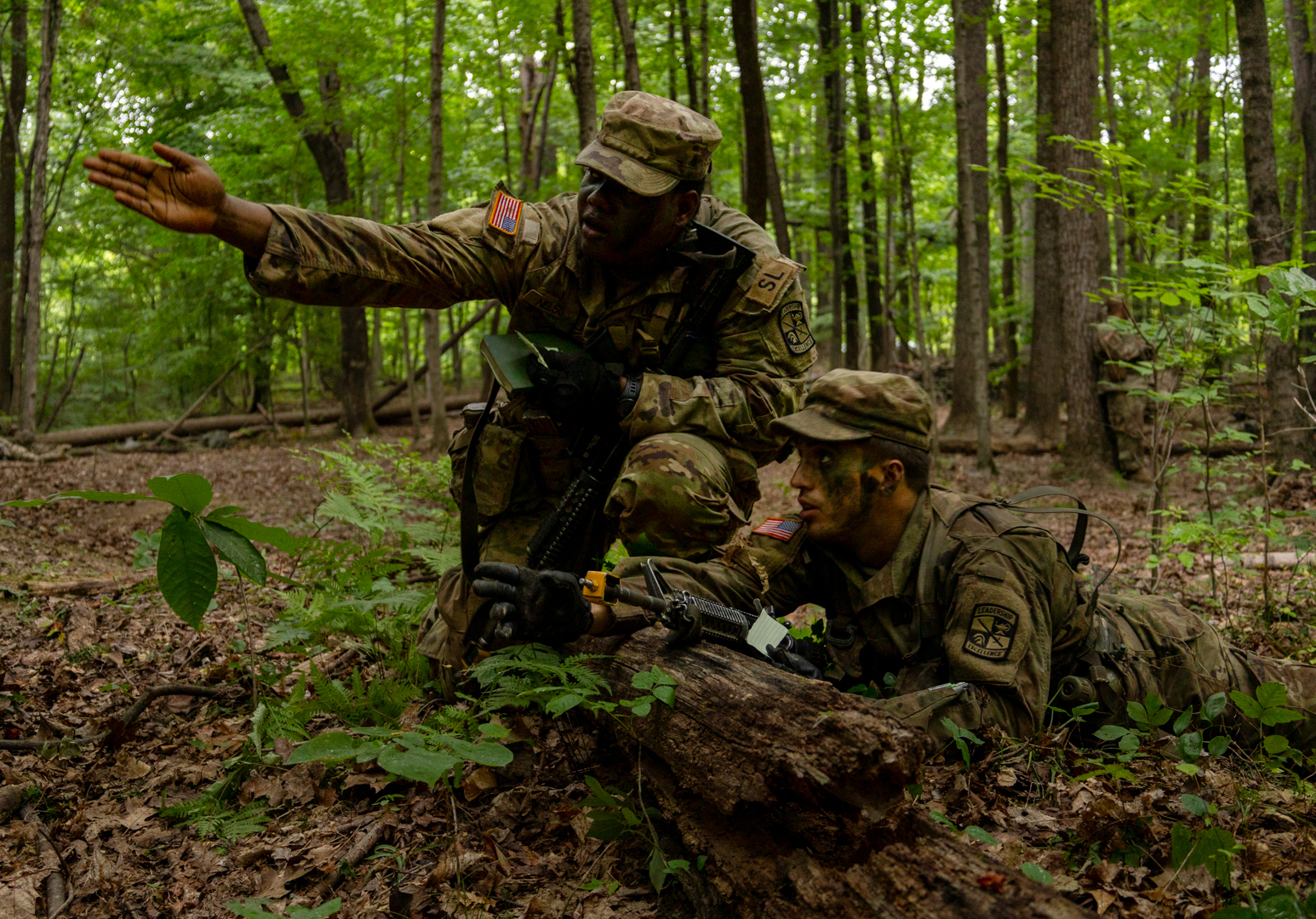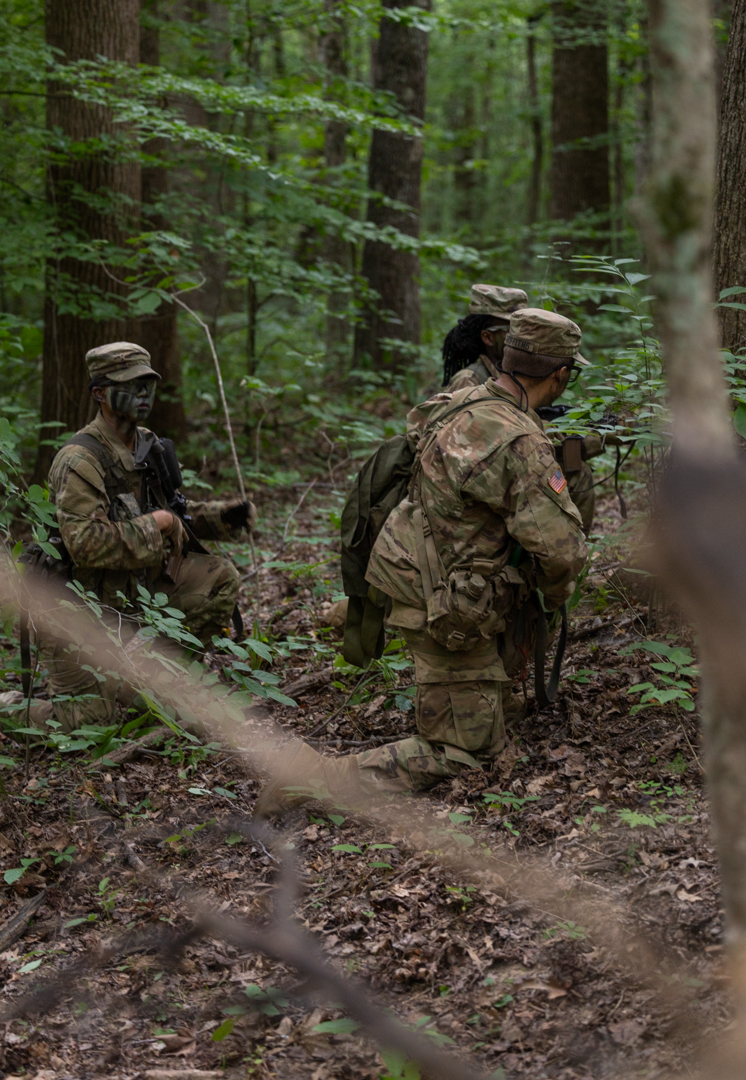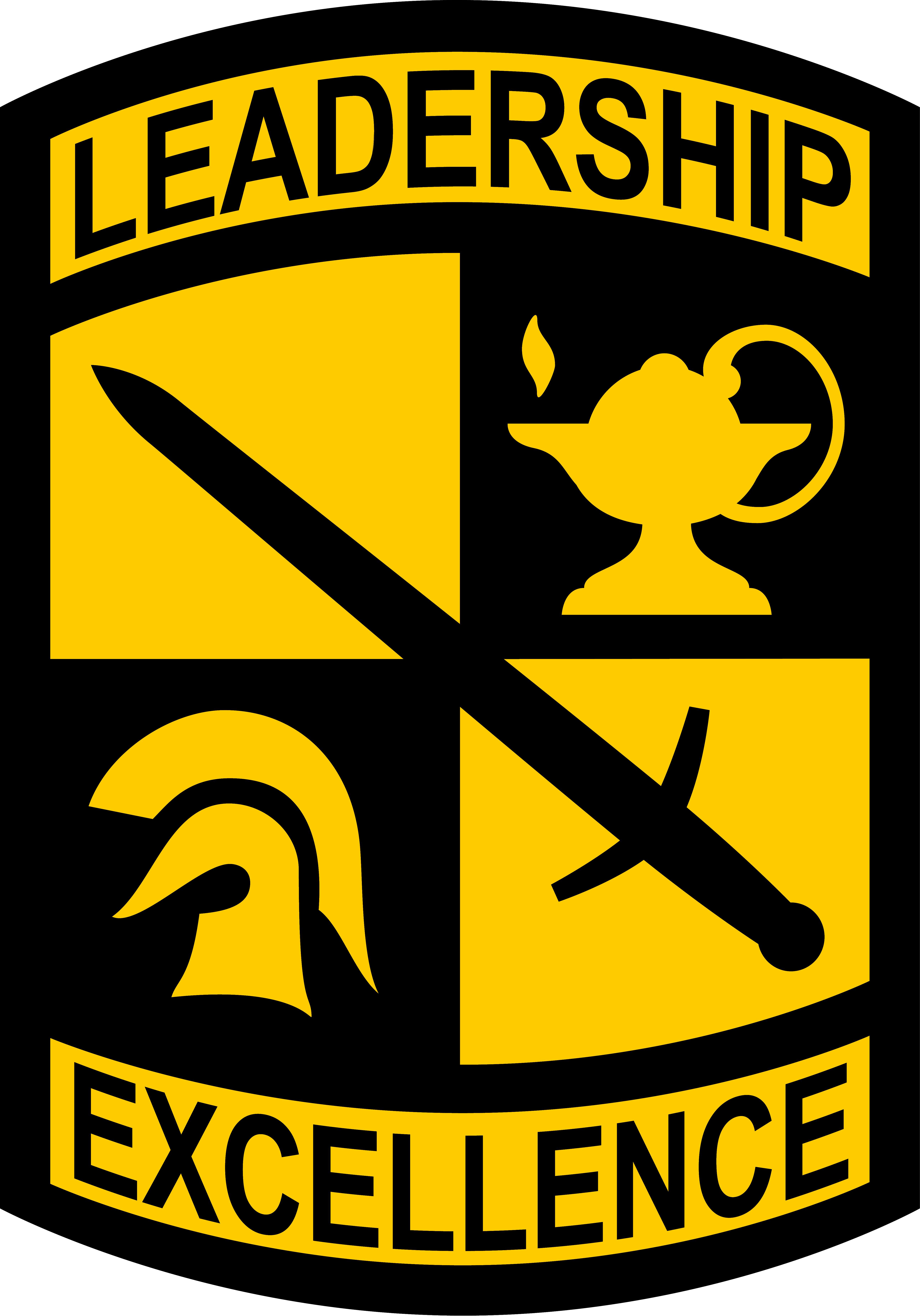


FORT KNOX, KENTUCKY- Cadets at Cadet Summer Training come from various ROTC programs across the country. Cadets with the 2nd Regiment, Advanced Camp, are engaged in an intensive training exercise known as “stick lanes,” which stands for squad tactics on Fort Knox, June 23, 2024. This exercise is designed to enhance their tactical proficiency and leadership skills. As Cadet Kayla Estrada from the University of Central Florida explained, “We’re currently setting up our patrol base and waiting for Warning and Fragmentary Orders and in order to go out and pursue our mission.” Said Estrada. “We have been out here for three days. Today marks our third day and then tomorrow we’ll be here for another fourth until we go back for a refit day.”
The stick lanes exercise is a critical part of the CST regimen, emphasizing the importance of basic tactical skills. “The reason why the Army has these conductive stick lanes is for practice as everyone knows, we are soldiers before we are anything else.” said Cadet Estrada. “That is why it’s important to prioritize these tactics and be proficient in them.”
Estrada’s journey in the Army began straight out of high school. After three years of enlisted service, she realized her aspiration to make a long-term career in the Army and transitioned to an officer role through the Green to Gold program. “I love school and I did not have any money for college.” Said Estrada. “So that is the basic reason why I went and just to get my degree, I was in I got my degree, and I was very blessed.”
The Green to Gold program is a selective process that allows enlisted soldiers to become officers while pursuing higher education. It involves submitting a packet and going through a rigorous selection process. Once selected, soldiers must complete extensive documentation in two phases. During this time, they remain active-duty soldiers, receiving full pay and benefits while attending school, which becomes their primary duty and top priority. After completing her degree, Estrada aims to continue her Army career, pursue a Ph.D., and eventually become a professor of military science in ROTC and, later, a professor of psychology.
Cadre Noah Lam highlighted the structure and purpose of the exercise, noting the variation in tactical knowledge among cadets. “The Cadets learn most of their tactical skills at their school, but they’re not all on the same page and also some of them have gaps in knowledge,” said Lam. “Wolverine gives them some time to become confident as tactical leaders because they’re going to get those reps before they start getting graded in Panther and Grizzly.”
The Wolverine phase features less challenging enemies, such as underclassmen, providing a lower-pressure environment for cadets to practice. Wolverine has an easier enemy to maneuver, such as underclassmen MS2’s, whereas groups Panther and Grizzly will face more challenging conditions with real infantrymen from FORSCOM, including vehicles, mortar tubes, larger movements, thicker terrain, and superior weapons systems.
This phase is ungraded, allowing cadets to experiment and refine their strategies without the stress of evaluation. “Wolverine is a good practice for them before they go out. It’s like a full pads practice before they go out on the field for the big game,” said Lam. “This approach gives cadets valuable experience in leadership roles such as platoon sergeant, platoon leader, or squad leader, ensuring they are well-prepared for more challenging phases.”
The stick lanes exercise underscores the Army’s commitment to developing competent and confident leaders, ready to face the demands of their roles in both training and real-world operations.

